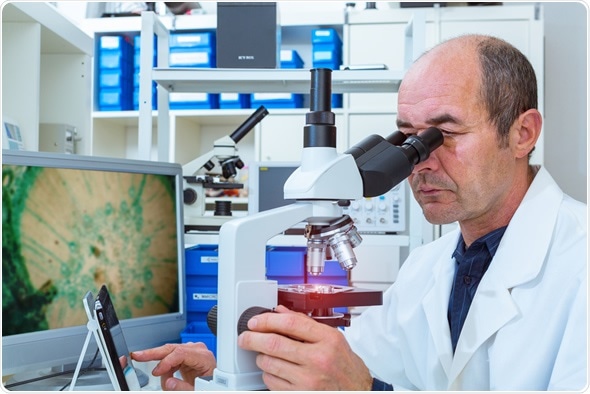The different fields of science have profited greatly from breakthroughs realized with the help of microscopes. These days, microscopy is benefitting numerous disciplines, with practitioners in these various fields employing microscopy techniques to examine fine details of objects that cannot be seen by the naked eye. Law enforcement units, for instance, use microscopy to collect and study forensics evidence they gather. Manufacturers, on the other hand, also use microscopes aided by high-quality translation stages and other precision motion control components to focus on and detect minute flaws on their products before these can be distributed and used by customers.
In this article, we’re listing down other fields that benefit directly from microscopy:
Botany
Botanists utilize microscopes in studying plant cells, flower and fruit variants, algae, mosses, and tree types. Through microscopy, botanists are able to study how plants convert simple chemical compounds into more complex chemicals. Botanical research also helps increase and improve our supply of food, medicine, and building materials. Environmental organizations and government agencies likewise rely on the understanding of botany to help come up with feasible solutions to growing problems like pollution.
Biology
The microscope is a biologist’s number one tool for collecting data. It is vital in viewing and studying the fine details in parasites, bacteria, and other small living organisms.Microscopy allows for the study of living cells in multicellular organisms, making it possible for scientists to observe cells when they carry out important biological processes.This technical field can also be used to explore the dynamics of molecules in order to gain insights on how cells and tissues are organized on a molecular level.
Biotechnology
Biotechnology is defined as the processing of biological systems and their components with the application of scientific engineering principles to generate useful products or services for society.A microscope aids biotechnologists in their observation and manipulation of living systems and organisms.Harnessing microscopy techniques and applications, biotechnology has been responsible for advancements in industrial processes, agriculture, medicine, pharmaceuticals, and consumable goods.
Medicine
Microscopy has also contributed immensely to the medical field.Because it enabled scientists to peer closely into living cells, they were able to come up with the germ theory and put an end to the idea of spontaneous generation. This realization led to physicians discovering the antiseptic technique, which prevented the spread of infectious diseases as well as surgical infections.The microscope also helped advance doctors’ surgical capabilities, allowing them to perform microsurgery to reconnect minute blood vessels and nerves. By understanding how a drug affects disease-causing microorganisms, scientists were also able to develop new medicines. With the help of microscopy, they were also able to pinpoint the effects of certain drugs and minimize its negative outcomes.Finally, the use of microscope also allowed tissues and blood to be examined on a deeper level, advancing diagnostics in both human and veterinary medicine.
Forensic Science
Forensic microscopy was thrown into the public’s consciousness, thanks to the popularity of TV shows such as CSI or Bones. But while not everything they show on television is real, most of it is based on science. Microscopy has aided forensics by aiding in the identification and classification of collected evidence. These can include fingerprint impressions, trace evidence like hair and fibers, and even genetic markers.
While actual forensic microscopy may seem less glamorous than its screen counterpart, it still serves as a powerful tool in helping solve crimes.It has helped in identifying and catching criminals on numerous occasions, as well as proving the innocence of many other people.
Nanotechnology
Nanotechnology involves the study of individual atoms, molecules, and other things at the nanoscale. To have a better understanding of this world, you need to get an idea of the units of measurements involved. One-hundredth of a meter is a centimeter, one-thousandth of a meter is a millimeter, and micrometer is one millionth of a meter. As small as these measurements may seem, they are still huge compared to the nanometer. According to Berkeley Lab, a nanometer is one-billionth of a meter and is smaller than the wavelength of visible light.It is also just a hundred-thousandth the width of human hair.
Today, scientists and engineers are finding ways to produce materials at the nanoscale to take advantage of their properties such as higher strength, lighter weight, and greater chemical reactivity. Nano engineers have begun to experiment with nanotubes and nanowires as base materials for cars and airplanes.The resulting stronger material has the potential to increase the safety of aircrafts,while its lighter weight could help improve fuel efficiency.Using a scanning probe microscope, scanning tunneling microscope, or atomic force microscope, scientists are able to explore many other applications of nanotechnology.
Microscopy has opened up a world of possibilities in the field of science today. The various types of microscopes have helped scientists understand the world on a cellular and atomic level. Microscopy offers a number of useful applications that benefit different fields. These applications have contributed to advancing research and technology and is continuously helping improve people’s way of life.

